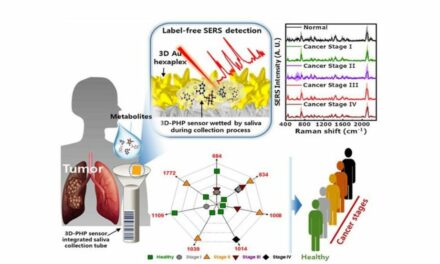Summary: Acute hepatic porphyria (AHP) is a challenging-to-diagnose rare genetic disease with overlapping symptoms, but researchers have developed an AI-based predictive algorithm to identify at-risk patients.
Key Takeaways:
- Algorithm for Early Detection: The predictive algorithm can identify AHP with 89% to 93% accuracy and detect the disease an average of 1.2 years earlier than traditional methods.
- Addressing Misdiagnosis: The algorithm aims to reduce misdiagnosis and inappropriate therapies by directing patients to porphyria experts, particularly benefiting women whose symptoms are often dismissed.
- Scalable Approach: As part of “Project Zebra,” this algorithm is a pilot for a broader initiative to improve the diagnosis of up to 10,000 rare and genetic diseases using AI while maintaining data privacy and security.
Acute hepatic porphyria (AHP) is a rare genetic disease with symptoms that overlap with many other conditions, making it extremely challenging to diagnose. Its symptoms mostly affect women with severe, sometimes life-threatening attacks that include abdominal pain, nausea, vomiting, limb weakness and anxiety. It can take up to 15 years to properly diagnose, leading to worsening symptoms and, in some cases, irreversible organ damage.
To improve diagnosis of AHP, researchers from UC San Francisco and UCLA, invented a predictive algorithm to analyze health care records and identify suspected porphyria patients. The algorithm searches through electronic health records to identify disease patterns and flag patients who may be at risk for AHP.
Their study was published in the Journal of the American Medical Informatics Association.
Improving AHP Diagnosis
With access to a rare and genetic disease database from the National Institutes of Health including signs, symptoms and presentation patterns for porphyria patients, and expert knowledge from Bruce Wang, MD, director of the UCSF Porphyria Center, the researchers’ algorithm was able to sift through the data and discover signals, allowing the data to speak for itself.
The researchers’ algorithm reviewed historical patient records and predicted which patients would be referred for AHP testing with a range of 89% to 93% accuracy. When it came to predicting who tested positive for the disease, the algorithm recognized 71% of patients earlier than their actual diagnosis, corresponding an average of 1.2 years earlier than without the algorithm.
“Rare diseases can often be misdiagnosed, so our goal is to diagnose patients earlier and manage their disease appropriately,” says senior study author Vivek Rudrapatna, MD, PhD, a gastroenterologist and UCSF assistant professor in the division of Gastroenterology. “Our algorithm’s predictive capacity could help direct patients to porphyria experts before they are misdiagnosed and receive erroneous therapies.”
“Unfortunately, women frequently get dismissed when they go to the emergency department over and over again for these complaints,” says study author Katharina “Kat” Schmolly, MD, former medical student at UCLA’s David Geffen School of Medicine. “It looks like it’s menstrual pain, but, actually, it could be a true liver disease.”
Scale to Identify 10,000 Rare and Genetic Diseases
AHP affects 1 in 100,000 people. The FDA approved Givosiran in 2019 as a prophylactic treatment for recurrent attacks. In an effort to speed up diagnosis, the drug’s manufacturer, Alnylam Pharmaceuticals, approached researchers at the UCSF Porphyria Center about developing an algorithm to identify possible patients.
“Given that it’s a rare disease, we knew up front that it was going to be difficult or impossible to run this as a single center endeavor,” says Rudrapatna. “So, we looked to our peers within the UC Health network, and UCLA is the largest of the centers within UC Health.”
This AHP prediction algorithm is the first of a larger project to improve the diagnosis of rare diseases, named “Project Zebra.” The Project Zebra team has now turned its sights to predicting cerebral aneurysms, a condition in which a weakened blood vessel in the brain balloons out or expands, possibly leading to its rupture and hemorrhage.
The researchers’ goal is to use the algorithm to validate up to 350 rare diseases with an accuracy of at least 85%. From there, they hope to eventually scale up to all 10,000 rare and genetic diseases, even extremely rare conditions that may not have a physician specialist.
The original AHP algorithm learned to identify patients with AHP using de-identified patient records from UCSF and UCLA. As Project Zebra scales up to more rare diseases, the researchers plan to incorporate novel methods to train these artificial intelligence models from many more centers without requiring explicit data sharing. By enabling the model to travel to the data, health systems can maintain the highest standards of privacy and security of patient data, while helping the models learn from every available case of a rare disease.
“I hope that at some point this is a standard feature of any electronic health records system,” says Schmolly. “The more patients we can diagnose, the more we can monitor over time, and we can create precision medicine approaches for these rare diseases. Many of them don’t have any treatments yet. So hopefully, we can find new treatment options for them.”
Featured image: Senior study author Vivek Rudrapatna, MD, PhD, a gastroenterologist and UCSF assistant professor in the division of Gastroenterology. Photo: UCSF





